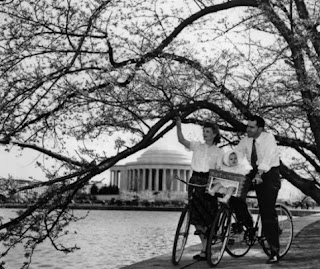I know that autumn officially began a week and a day ago. However, the ride I took today felt like the first of the season.
In part, it had to do with the weather: The temperatures were almost exactly on target, maybe a couple of degrees cooler than normal. The air had that cool crispness you normally associate with the season (at least in this part of the world). But most telling was the particular kind of haze one sees in the distance at the seashore when clouds gather at this time of the year:
This is not the "hothouse" haze borne of humidity you can't escape on a summer day. Nor is it the light, almost linen, haze you see on a mid- or late-spring day. This is the kind of haze that brings colors into focus yet diffuses light. If I were a painter or even a photographer, I would want to render the subtle differences in tones between these kinds of haze on my canvas, paper or screen.
As I started my ride home from Point Lookout, the sky quickly grew brighter, almost as if in a flash. Then, almost as quickly, clouds gathered and grew darker and heavier than the ones in the first photo. About half a mile from the Atlantic Beach Bridge, what I like to call a "Florida Shower" fell from the sky: an intense rain that cut visibility to nearly zero--but, strangely, was not accompanied by thunder or lightning. Also, it wasn't steamy, as the ones in the Sunshine State usually are. I took refuge under the awning of a church that, it seemed, had completed its services and breakfasts or lunches for the day.
Within fifteen minutes, I was back on the road again.
















.jpg)































